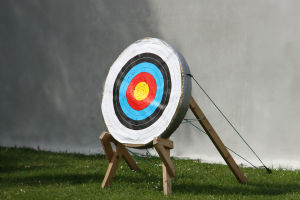Golf is a sport that combines physical exercise with the beauty of nature. The name "golf" is derived from its acronym, G—Green, O—Oxygen, L—Light, F—Friendship, which reflects the sport's connection to nature and its emphasis on relaxation and mental focus.
It's a sport that allows you to immerse yourself in nature, clear your mind, and release stress.
What is a Golf Course Like?
Golf courses typically consist of 9 or 18 holes, with a standard 18-hole course divided into 18 different areas, each with unique sizes and shapes. These areas include a tee (starting point), fairway, green, hole, rough, bunkers, water hazards, and other obstacles. The total length of a standard 18-hole course ranges from 5,943 meters to 6,400 meters, and the width varies. The boundaries of the course are marked by boundary lines, and key areas are often demarcated with stakes.
Golf Rules: An Overview
Before engaging in any sport, it's crucial to understand the basic rules to ensure a fair and enjoyable experience. Golf is a game that emphasizes gentlemanly conduct, and understanding its fundamental rules is essential. Below are some important rules and distinctions between shot play and match play, as well as how to handle various situations during a game:
1. Objective of the Game: The goal of golf is to hit the ball into a hole using as few strokes as possible, with the least strokes being the winner. Golf requires concentration and skill, and players aim to complete the course using the fewest strokes.
2. Course Variability: Unlike other sports with fixed playing fields, golf courses can vary greatly, and each hole has its own unique layout and difficulty level. The difficulty of a hole often depends on its length, with a standard par being 72 strokes for 18 holes.
Types of Golf Competitions: Shot Play vs. Match Play
1. Shot Play: In this format, each player's strokes for all holes are counted, and the player with the fewest strokes at the end of 18 holes wins.
2. Match Play: This format determines the winner of each hole individually, and the player who wins the most holes wins the match. Unlike shot play, match play focuses on winning individual holes rather than minimizing strokes across the entire course.
Penalty Rules
1. Out of Bounds (OB): If a ball lands outside the designated boundaries of the course, it is considered out of bounds. This area is typically marked with boundary stakes or fences. Players must play from where the ball went out of bounds with a one-stroke penalty.
2. Lost Ball: A ball is considered lost if a player or their caddie cannot locate it after five minutes of searching, or if the ball is in a location where it can't be identified as the player's.
3. Water Hazards: Water hazards, such as lakes, rivers, or ponds, are marked by yellow or red stakes. If the ball lands in a water hazard, players must take a one-stroke penalty and may either play from the original spot or proceed to drop the ball behind the hazard.
Golf Etiquette
Golf is known for its refined etiquette, with a strong focus on safety, respect, and fairness:
• Safety: Before swinging, players must ensure that no one is in their swing range, and there are no potential hazards like flying stones or balls.
• Silence: Players should remain quiet and still while others are preparing to hit their shot.
• Pace of Play: To avoid delaying the game, players must maintain a reasonable pace. If a group falls behind, they should allow faster groups to play through.
• Priority on Two-player Groups: Two-player groups have priority over three or four-player groups on the course.
Why Do People Enjoy Golf?
• Strategy: Golf is a strategic game that requires players to consider various factors like terrain, slope, obstacles, and weather when making each shot. Players must plan their moves carefully, considering both the immediate and long-term effects of each shot.
• Speed: Golfers can reach speeds of over 100 mph with their swings, and the ball can travel up to 140 mph. A single shot can cover over 200 meters, providing a thrilling sense of release and excitement.
• Skill: As golfers improve their technique, they develop a deeper appreciation for the skills involved. The complexity of the game increases with experience, and many players find joy in the challenge of continually refining their performance.
In summary, golf is a sport that blends physical activity, mental focus, and connection with nature. It requires skill, patience, and strategy, and it offers a unique way to relax and challenge oneself while enjoying the outdoors. Whether you're an experienced golfer or a beginner, it's a sport that offers something for everyone to enjoy.


